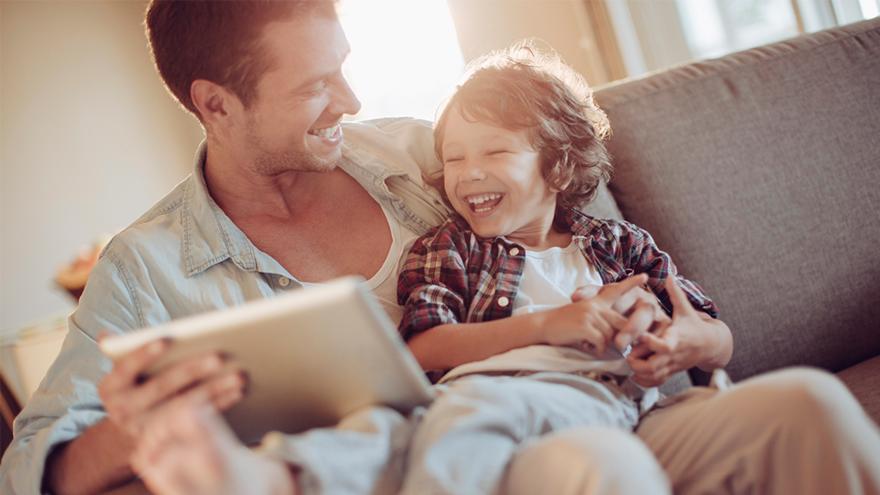Keeping children safe online
Keep your kids safe on the internet with these easy-to-follow tips for computers, phones and tablets
Using the Internet safely
The Internet is a fantastic source of fun and learning, but it’s worth following some simple rules to help your children stay safe online.
- Always sit with young children when they use the Internet.
- There are plenty of safe places for children to play and learn on the web (like the CBeebies website) Get to know them and save them as shortcuts in your favourites folder.
- You can adjust browser settings and filters to protect children from unsuitable sites. Internet safety organisation Internet Matters has an interactive guide to setting parental controls across your whole house.
- If you have older children who want to explore on their own, it is a good idea to keep the computer in a family room or a place you share.
- Talk to your child about how to stay safe and let them know they can come to you if they find themselves in any sort of trouble.
- Remember – your actions and what you share online also play a big party in your child’s online safety. Recent evidence reveals ‘the average parent will share their child’s image online nearly 1000 times before their fifth birthday (The Parent Zone, 2015). Are you a ‘sharent’? Before you share again, take a look at Seven safer ways to share photos of your child.
Children and social media
Social networking sites aimed at grown-ups, such as Facebook and Twitter, are not suitable for children. The suggested minimum age for most social networking sites is 13 – so keep an eye on what sites your child is accessing, and be aware of age restrictions on the sites you use yourself.
Consider carefully the impact of anything you share on your own social media networks about your child, and think about whether what your post could identify them to strangers, compromise their safety, humiliate them, or cause them distress now or later in life.
YouTube has resources to help parents and guardians understand children’s behavior online. These tools and resources can help you manage your family’s experience on YouTube. The CBeebies YouTube channel also offers a safe environment where adults and children can enjoy CBeebies content together.
Using apps on mobiles and tablets
Lots of children now use apps on smartphones and tablets. Some devices come complete with a ‘child mode’ that can prevent little ones from accidentally leaving the app they’re using and coming across other things accidentally. Child safety ‘locks’ are also available as downloadable apps for mobile devices.
Be aware that some apps for children have ‘in app purchases’ that allow money to be spent to progress to another level or get extra features to the game. Depending on your device, you can often add parental controls which mean that the app will have to ask for a password before a purchase can be made.
On some devices, you can even set up a child profile that will only allow your child to download free apps and games, and will prevent any in-app purchases, even within free games.
CBeebies apps are free to download and have no in app purchases, so this is a good app option for young children.
Games consoles
Most games consoles connect to the Internet so it’s important to explore the parental control and security settings for your devices and make sure they are set to the level that you require.
BBC iPlayer Kids – Child Friendly Video App
Child-friendly BBC iPlayer Kids app is available for children of all ages, to watch and download (via the Apple, Google Play and Amazon app stores) children’s video content, without the fear of them linking to or finding anything ‘unsuitable’.
With a child-friendly design it’s usable by children, allowing them to easily discover and watch, both new and favourite shows.
Find out more
Visit UK Safer Internet Centre for more tips and advice, plus more information about Safer Internet Day 2020.

